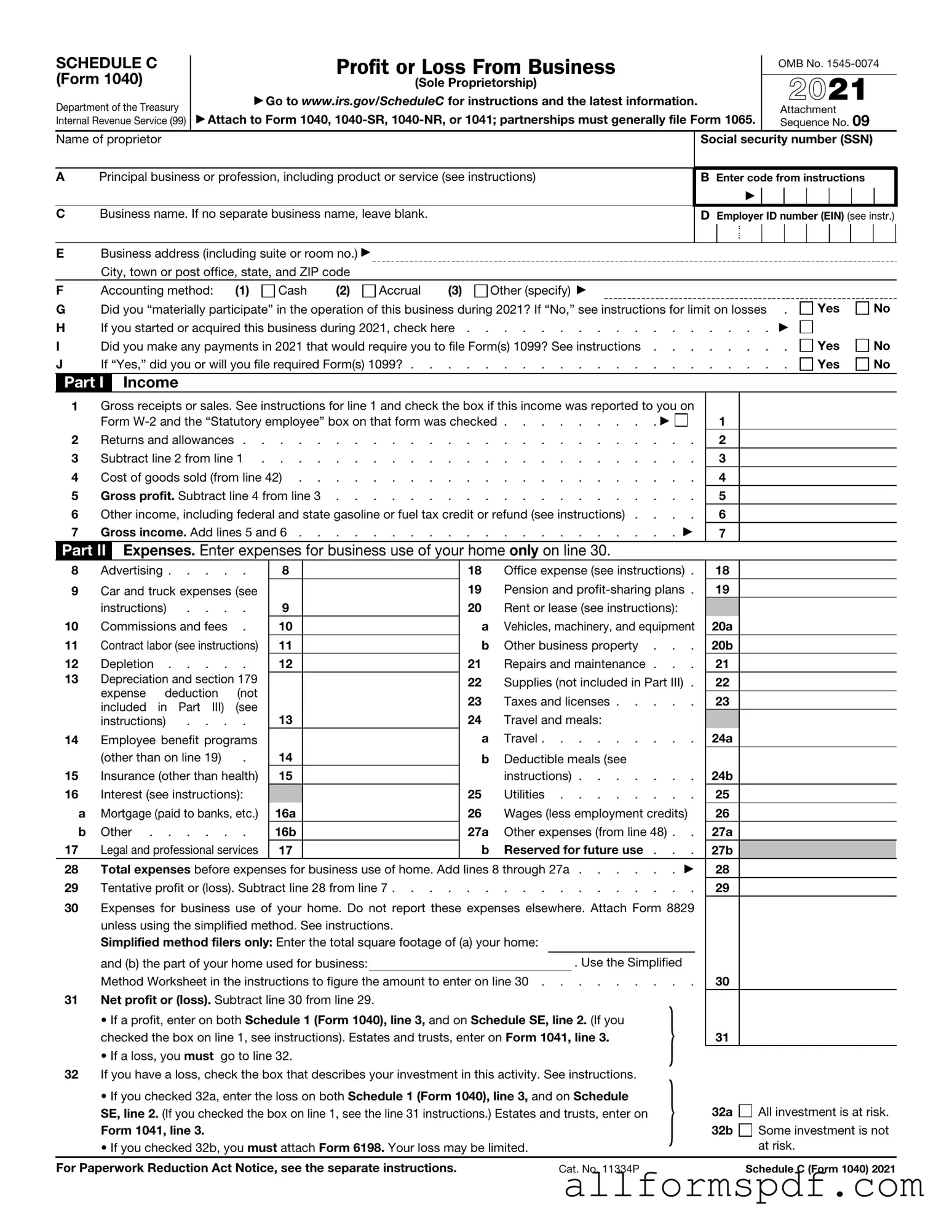Filling out the IRS Schedule C (Form 1040) can be daunting for many. One common mistake is failing to report all income. Every dollar earned from your business should be included. Omitting even a small amount can lead to issues down the line. It’s essential to keep accurate records of all revenue sources to ensure nothing gets overlooked.
Another frequent error is misclassifying expenses. Business expenses must be categorized correctly to avoid complications. For example, personal expenses should not be mixed with business costs. This can lead to an inflated deduction and potential penalties. Keeping a clear distinction between personal and business finances is crucial.
Many individuals also neglect to keep receipts and documentation for their expenses. The IRS requires proof of expenses claimed on your Schedule C. Without proper documentation, you risk losing out on legitimate deductions. Organizing receipts and maintaining a detailed record can save you headaches later.
Additionally, some people fail to take advantage of all available deductions. There are numerous deductions available for business owners, such as home office expenses, vehicle use, and supplies. Not being aware of these can result in paying more taxes than necessary. Researching and understanding all potential deductions can maximize tax savings.
Another mistake is not calculating the cost of goods sold accurately. If you sell products, it’s vital to understand how to calculate this correctly. Errors in this area can lead to incorrect profit reporting. A precise calculation ensures that your income reflects your actual earnings.
Some individuals also forget to sign and date their Schedule C. It may seem minor, but an unsigned form can lead to delays in processing and potential rejection. Always double-check that all necessary signatures are in place before submission.
Moreover, failing to report self-employment tax can be a significant oversight. Self-employed individuals must pay both income and self-employment taxes. Not accounting for this can lead to an unexpected tax bill. Understanding your tax obligations is essential for financial planning.
Many people also overlook the importance of filing on time. Late submissions can incur penalties and interest. Being aware of deadlines and planning ahead can help avoid these unnecessary costs.
Finally, not seeking professional help when needed can be a costly mistake. Tax laws can be complex, and it’s easy to make errors without proper guidance. Consulting with a tax professional can provide clarity and ensure compliance with IRS regulations.
